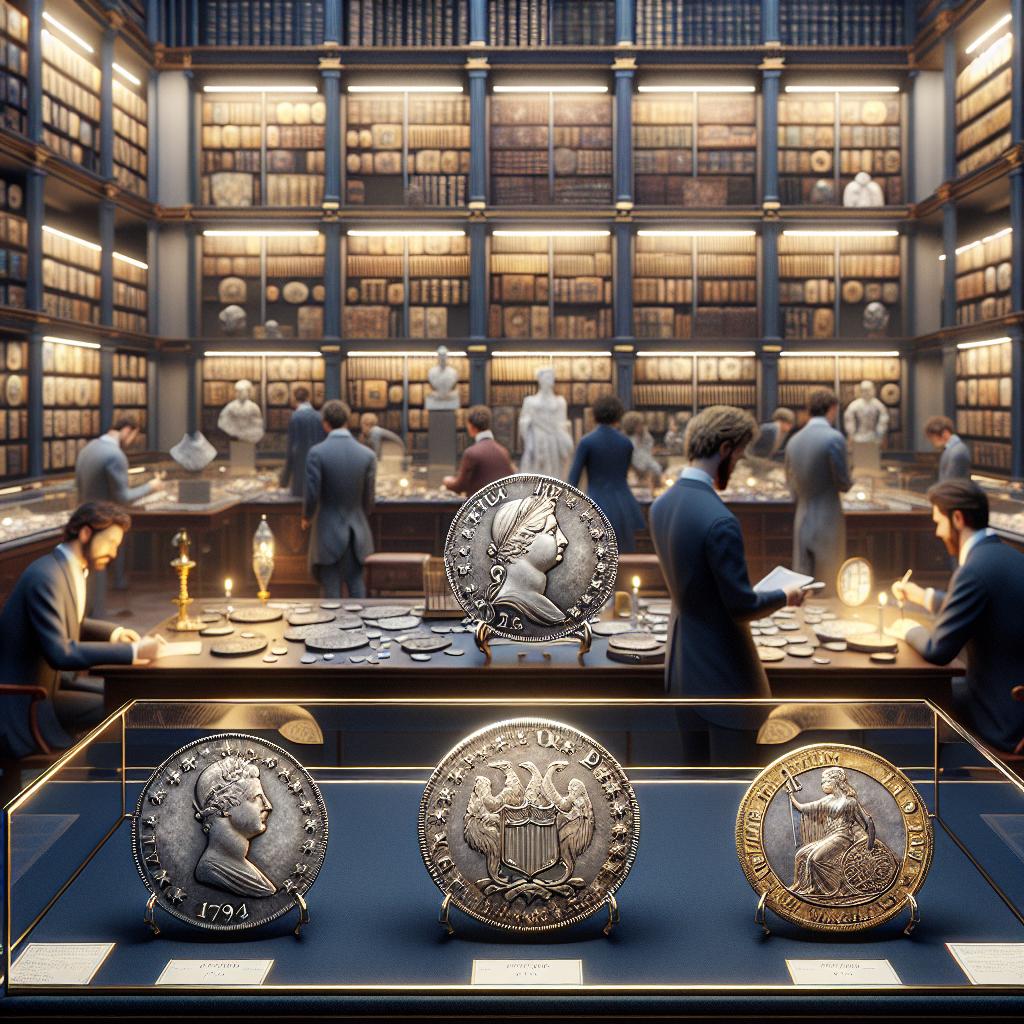Highlights
- Rare coins are treasured for their historical significance and artistic merit, appealing to passionate collectors worldwide.
- Notable coins like the 1794 Silver Dollar and 1933 Gold Eagle exemplify immense rarity and value in numismatics.
- Engaging with expert resources can help ensure authenticity and preservation, safeguarding your investment in these cultural artifacts.

Summary and Historical Context
Rare coins are prized for their scarcity, historical significance, artistic merit, and metal content, linking collectors to important cultural and economic moments. Notable examples include the 1794 Silver Dollar, the medieval 1343 Edward III Florin with only three known specimens, and the 1933 Gold Eagle, each valued for rarity and provenance. These coins serve as cultural artifacts, preserving history and attracting collectors worldwide.
Coins like the 1794 Silver Dollar symbolize early American identity, while the Edward III Florin reflects medieval English monetary practices. Chinese coins such as the 1343 Kannari Sycee also hold major cultural importance. Their rarity and unique stories ensure ongoing interest among historians and collectors.
Top 10 Rare Coins Sought by Collectors
Highly sought coins include the 1921 Peace Dollar, valued for its high relief and post-WWI symbolism; the rare 1933 Gold Eagle, legal to own due to unique circumstances; and the 1343 Edward III Florin, with only three surviving specimens. The 1822 Half Eagle $5 gold coin is another extreme rarity, with just three known examples. The 1804 Dollar and Chinese silver ingots like the Kannari Sycee and Fengtien Tael are also prized for rarity and cultural significance.
The 1909-S VDB Lincoln Cent is a key American rarity due to low mintage and designer initials removal. Limited production U.S. Mint Sets from years like 1970-D and 1996-W also command attention for their rarity and condition. These coins balance monetary value with historical legacy and craftsmanship.
Factors Influencing Coin Value
Coin value depends on rarity, historical significance, condition, and collector demand. Limited mintages and unique historical contexts raise prices, as seen with the 1909-S VDB Lincoln cent and commemorative series. Condition grading by professional services like PCGS and NGC is crucial, with higher grades fetching premiums. Market trends and emotional collector interest add volatility, distinguishing rare coins from bullion investments.
Authentication and Counterfeit Detection
Counterfeiting poses significant risks, especially for high-value coins like the 1907 $20 Double Eagle and 1909-S VDB Lincoln cent. Fakes often show flaws such as fuzzy details, damaged rims, or inconsistent wear. Detection methods include visual inspection, magnet tests, and assessment of luster. Expert authentication and graded encapsulation are vital. Advances in AI are expected to enhance detection accuracy alongside professional expertise.
Preservation and Storage
Proper preservation maintains coin condition and value. Encapsulation in protective holders with grading labels prevents damage and ensures authentication. Storage should minimize exposure to moisture, temperature changes, and contaminants, using acid-free materials and secure locations like vaults or safe deposit boxes. High-value coins often reside in institutional collections to ensure security and longevity.
Notable Sales and Market Trends
Auction houses such as Blackwell Auctions, Stack’s Bowers Galleries, and GreatCollections drive record prices through expert authentication and marketing. The rare gold coin market is particularly strong, exemplified by an 1849-C Gold Dollar selling for $3.84 million. These trends demonstrate how rarity, timing, and venue affect coin values, with buyer demand often surpassing intrinsic metal worth.
Cultural and Numismatic Significance
Rare coins are historical artifacts reflecting cultural heritage and artistry. Chinese coins like the Fengtien Tael and Kannari Sycee symbolize national traditions and carry significant collector value. American coins such as the 1798 Half Eagle and the Brasher Doubloon represent early U.S. monetary history and craftsmanship, embodying the nation’s growth and identity through numismatic art.
The content is provided by Sierra Knightley, Fact-Nest












